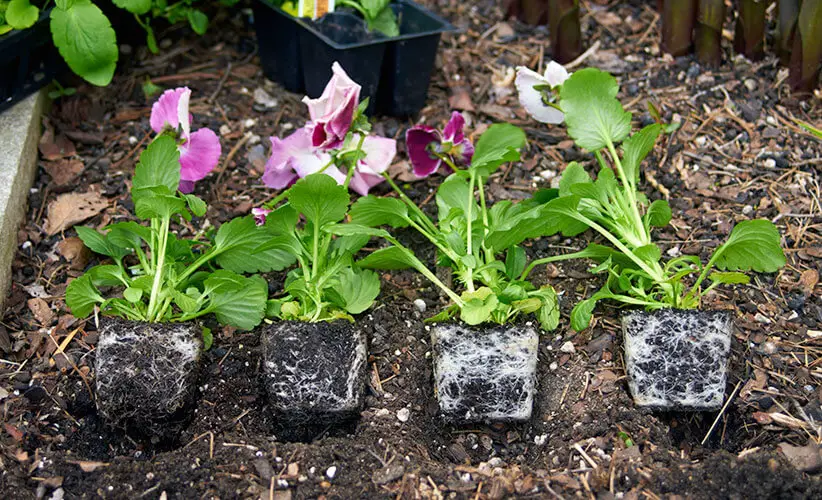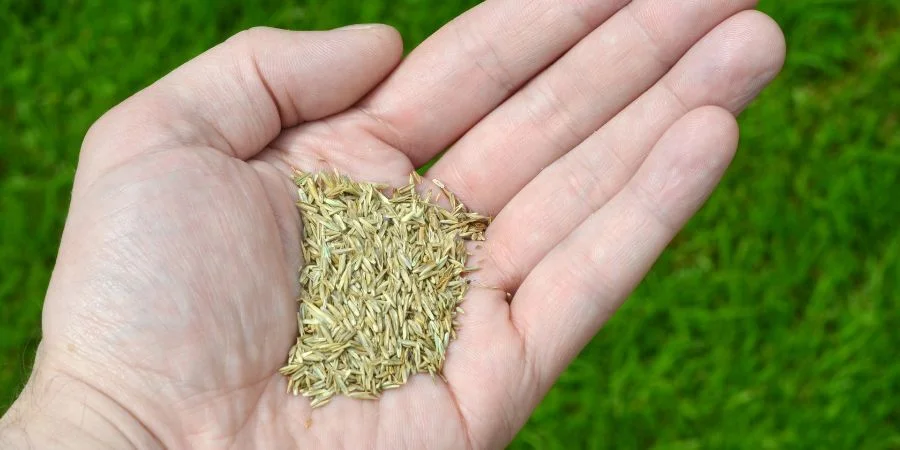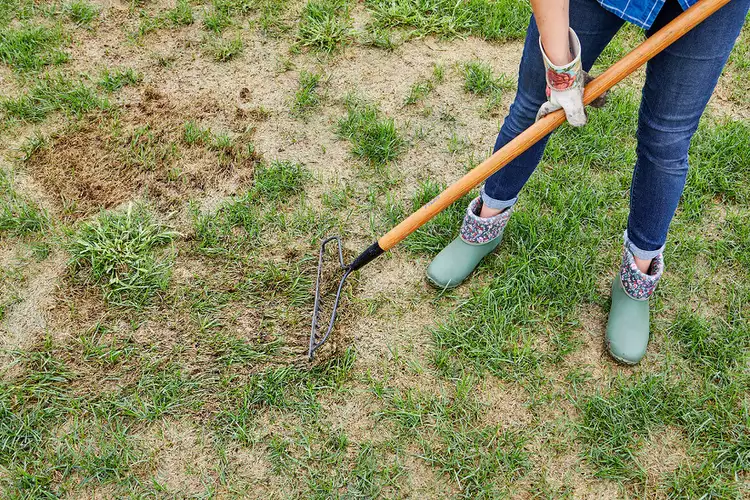Do Deer Eat Pansies?
Last Updated on November 5, 2021 by Duncan
You live in a deer-infested area, and one day you get home and find your once beautiful pansies have been nibbled down to the bone. The inviting flower heads you looked forward to? Have been chewed off. You are beside yourself.
Do deer eat pansies? You wonder.
Yes, deer eat pansies. Pansies grow in different colors, including white, blue, yellow, and even purple. As they bloom, these colors get the attention of deer, and because of their soft texture and high water content, the pansies make a tasty snack for the hungry deer.
You can see deer eating the pansies here:
Although, they can be attacked at any time, pansies are more vulnerable in spring, when the tender new buds form.
Living in a deer-infested area doesn’t mean you have to move or stop growing pansies for winter color—you simply need to protect your beautiful flowers. How do you do it?
Spray hot pepper wax around your pansies
Deer, like other animals, don’t like the smell of cayenne pepper, so you can use it to your advantage. Buy hot pepper wax and spray it in and around your pansies. When the deer move in to eat them, the smell of the pepper will deter them and turn their noses and go elsewhere.
For the best outcome, apply the pepper multiple times, following the labeled instructions.
Remember that you have to keep applying the hot pepper to keep the scent active. After a few failed attempts to eat the plant, the deer will give up and stop coming to your garden.
Put up a fence
If you don’t mind living with a fenced garden, you can fence your garden or entire compound with a 6-8 foot fence or chicken wire. Remember to keep the gate closed at all times so that the deer don’t simply walk into your property and destroy the plants.
Plant deer-resistant plants
Here you need to line the perimeter of your garden with deer-resistant plants. It’s also wise to mix these plants throughout your garden.
Some of the best plants to go for are those with prickles, thorns, needles, and foul smells. Excellent examples being: aloe, mint, foxglove, daffodils, lamb’s ear, and magnolias.
Highly fragrant flowers such as peonies, lavender, and bearded irises will also help keep off the animals.
If you aren’t sure about the right plants to use, you simply need to look at those native to your area. If plants are growing unperturbed in your area, these are the best to go for. After all, they haven’t been harmed by the deer.
As a rule of thumb, never plant deer candy plants around your pansies, as they will attract the deer and eat your beautiful flowers. This means that you should stay away from plants such as daylilies, hostas, and English Ivy.
If you plant a plant that you thought was deer resistant and notice the animals feeding on it, consider replacing it with another.
Read other ways to keep deer out of your garden here:
How do you grow the best pansies?
Pansies make the perfect plants for any homeowner looking to add some garden color during the cool-weather months. And the beauty is they don’t require a lot of maintenance and don’t get too wide even after planting them in an open garden.
Since they don’t get too wide, avoid spreading them out too much when planting them. A good rule of thumb is to keep them 2-4 inches apart. For guidance, see the photo below.

Plant them in the right soils
Like any other plant, you need to plant your pansies in the right soils. Pansies love well-draining soils, which come in handy at preventing the roots from rotting.
The plants require consistent moisture, so you need to regularly water the plants, especially during spring, to get the best flowering.
The pansies growing in the shaded areas will still flower even without much watering.
Fertilize the pansies
Like the grass and other plants in your garden, you need to fertilize your pansies for more flowers. For the best outcome, use a balanced formula such as 10-10-10 fertilizer. You can also use a fertilizer with slightly higher nitrogen content.
If growing your pansies over winter, apply a balanced slow-release fertilizer such as Osmocote to feed the plants during the warm spells.
Deadhead the pansies
If you have planted the pansies in the right soil and fed them with the right fertilizer, they are bound to produce many flowers that fall to the ground and go to seed. As you can guess, this increases the pansies population in your garden.
Whether growing the pansies in the open or in a pot, the overcrowding is unnecessary as it increases competition. The flowers that don’t seed consume a lot of energy and prevent the pansies from blooming again.
To counter this, you need to deadhead the pansies. Deadheading is removing the spent flowers from the plant. By clipping and removing the spent flowers, you help the plant grow faster and have a longer bloom period.
A good rule of thumb is that if the flowers fall to the side on the tender stems, cut them back a minimum of 5 inches and up to 7 inches.
The beauty of deadheading is that you don’t need special skills—you can easily do it even if you have never done it before. The only thing you need to do is to ensure that you are cutting off the right stem.
Remove any dead flower, and any other that you think will die. When doing it, remember to remove the flower head and the top part of the stalk.
You can use a cutter or your fingernails to pinch the flowers off the plant. Regardless of what you are using, ensure that you apply the right cut where the stalk connects with the first leaf growth.
Warning: Never yank or try to pull the spent bloom off as this will uproot the entire plant, and you don’t want this, do you?
After removing the dead flowers, carefully inspect them for aphids and slugs. If they are present, spray your flowers with a bit of soapy water to remove them.
Trim the pansies
Besides deadheading the plant, you also should trim it to remove the excess inches.
Pansies aren’t big plants and, in most cases, attain a height of up to seven inches. As they near the end of their growing season, they get all spindly, leggy, and taller.
Overgrown pansies are not only an eyesore, but also risk falling over, so it’s vital you trim them.
Since the flowers are delicate, you need to be gentle, so you should use a small set of clippers suitable for delicate flowers.
For the best results, remove at least three to four inches of the pansies. When making the cuts, ensure that you apply it above the leaf set on the stalk.
To keep the pansies growing even after trimming them, apply a small amount of fertilizer after cutting. A good rule of thumb is to apply not more than a teaspoon for each square foot on your garden bed.
You should then sprinkle the fertilizer on the soil at the base of the plant. When sprinkling, take care not to apply it on the leaves, as this might cause the plant to burn.
Apply the balanced 10-10-10 fertilizer we mentioned above, then water the plant thoroughly to activate the fertilizer.
Fun facts about pansies
- The name pansy comes from the French word meaning “thought” because the flowers look like faces nodding in contemplation in the summer months.
- Pansies come in various colors, such as orange, red, purple, white, yellow, and even black. It’s also common to have bi and tri-color varieties.
- The plants grow between 6 and 12 inches tall, and they have medium green stems and leaves. They produce flowers with broad, rounded petals that overlap.
- Pansies are biennials. This means that they possess a two-year lifespan. Foliage grows in the first year, while flowers come about in the second.
- Pansies are manmade hybrids that don’t occur naturally—they are derived from native flowers in western Asia and Europe.
- Pansy extracts can be used to treat minor skin conditions, and since they are entirely edible, you can use them in salads as culinary garnishments.


